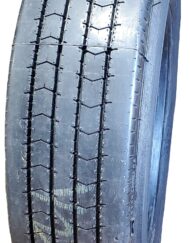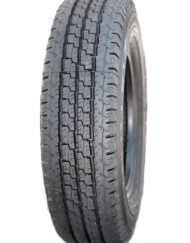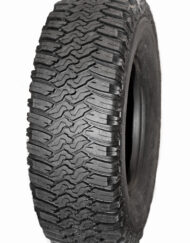Why Tires are Better Today than Ever Before
Think about it: you surely wouldn’t drive your 2017 Shelby GT350 on a set of 1977 rubber, would you? But did you ever stop to wonder what has changed in tire technology since the 1970s?
Over the years, the tire industry has seen many amazing innovations and changes, from solid to pneumatic, from bias-ply to radial, the industry keeps striving to make tires that perform better, run more efficiently, and last longer than ever before. That’s good news for the retread tire industry because better casings mean better retreads.
Better Tire Technology
It’s hard to believe, but not so long ago, families routinely carried a full-size spare and trained sons and daughters alike to change flat tires along the side of the road. While flats still occur, it’s no longer the everyday occurrence that it once was. The modern tire has benefitted greatly from improvements in chemistry, engineering, technology, and testing. According to Consumer Reports, buyers value durability and treadwear over all else and technology has risen to the demand.
“There’s absolutely no comparison between the performance of today’s tires and those of 30 years ago,” said Guy Edington, managing director of Kumho Tire Co.’s North American Technical Center in Akron, who was quoted in an article for Tire Business. “Even the dry-pavement traction and handling of the street tires available in those days wouldn’t measure up to the wet-surface performance of today’s high-performance tires. They’re that good.” Not only that, but Tire Business reports that today’s tires last longer and cost less than ever before.
Improved Treadwear
Manufacturing has dramatically improved since the 1970s. Improved compounding materials and processes such as solution-styrene butadiene rubber (S-SBR) and other reinforcements have allowed tire makers to improve performance by lowering rolling resistance, increasing traction and improving handling while maintaining a long treadlife.
- Steven Carpino, director of research and development for Pirelli Tire North America, noted for Tire Business that, “besides delivering more than twice the treadwear of their predecessors 30 years ago, today’s passenger tires boast significant advancements in other respects, such as emergency handling, resistance to aquaplaning, and overall durability.”
Tire Pressure Monitoring Systems
Another reason drivers are enjoying longer lasting tires has nothing to do with the rubber! Standard equipment since 2007, tire pressure monitoring systems (TPMS) have helped keep cars rolling on safely inflated tires. Proper inflation helps maximize fuel efficiency while minimizing unnecessary tire wear.
Increased Regulation Improves Tire Safety
While increasing regulation can certainly be a double-edged sword, better industry regulation has led to safer tires. No longer are “seconds” or “blems” on offer and the tires that we see on the market are carefully tested and uniform.
Tire Safety Certification
As drivers and mechanics become more and more tire savvy, tire safety is increasingly important. The Tire Industry Association offers a 300- to 400-level certification program for service professionals that provides in-depth instructions for servicing cars and light trucks. The 15-module course covers everything from the basics of tire construction to TPMS diagnostics.
For the latest news and research from the tire industry, visit our blog. To shop retread tires, visit Tire Recappers online.




